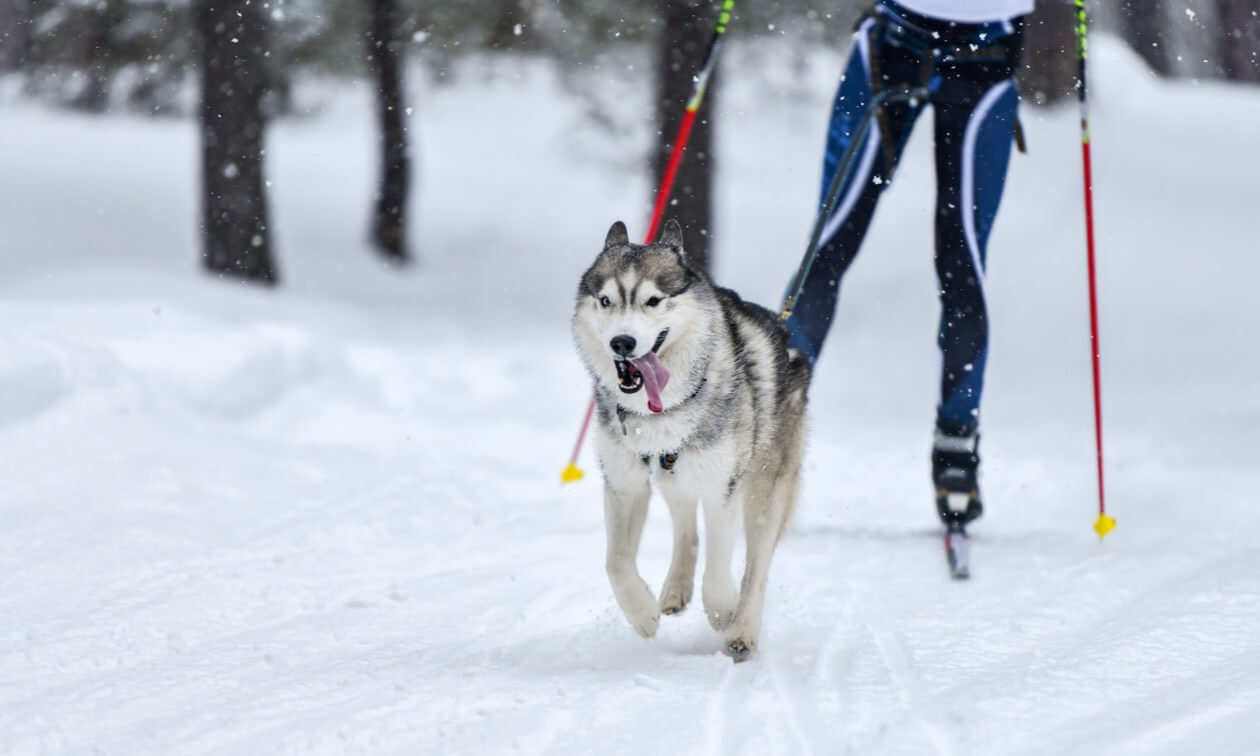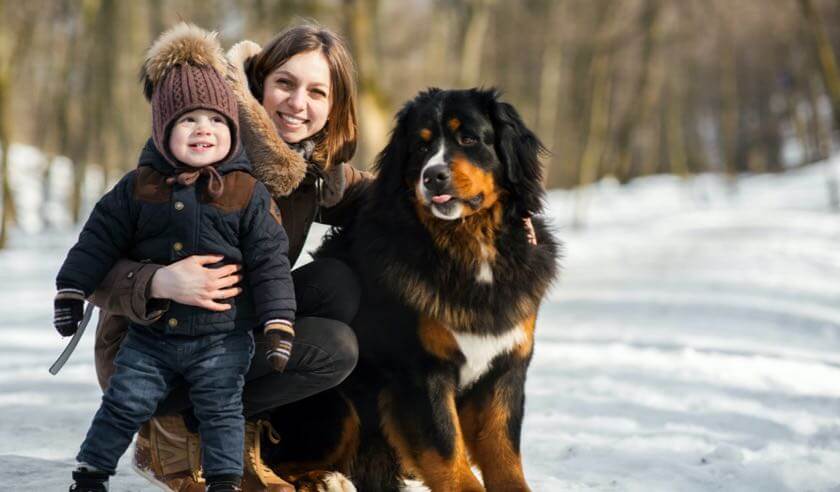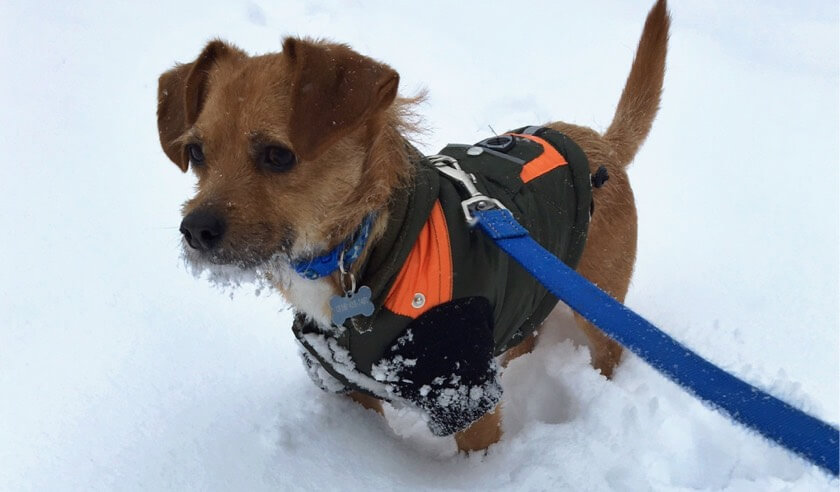One way to get out in the snow and have fun with your dog is with the winter dog sport of skijoring. Whether you want to compete in races or simply get some exercise for both you and your dog, you’ll get to zip along cross-country ski trails and enjoy nature together.
What is Dog Skijoring?
Skijoring is from the Norwegian word skikjøring, which means “ski driving.” Long used as a form of transport throughout Scandinavia, a skier is pulled along the snow by reindeer, horses, and yes, even dogs. Dog skijoring is typically done with one or two dogs pulling the skier behind them.
Dog skijoring is a perfect combination of skiing, sledding, and trail running for you and your dog. Popularity of the sport has grown, and more dog owners are signing up for classes and even participating in competitions to test their dog’s skills and speed (as well as their own).
Just like sled-pulling, dog skijoring uses cues to tell the dog when to speed up, slow down, and turn. To get started with your dog, you’ll first want a foundation in cross-country skiing yourself. The more confident you are on skis, the safer it will be introducing your dog to skijoring.
What Types of Dogs Do Well with Skijoring?
While you may think that skijoring is just for the “Northern” dog breeds bred to pull, like Huskies, Malamutes, and Samoyeds, it’s a sport that almost any dog can do. Active dog breeds and mixes excel in the sport, from German Shorthaired Pointers to Greyhounds to Labrador Retrievers and more. It all comes down to their desire to pull and run.
Smaller dogs can get in on the snowy fun — although don’t expect them to pull. For smaller dogs, be ready to provide the power yourself, and have your dog running alongside on a leash.
If you’re considering trying skijoring with your dog, the first thing you’ll want to do is check with your veterinarian that your dog is healthy and that they are old enough. It’s important that your dog’s bones and joints are fully grown before getting involved in a pulling sport. This helps reduce the risk of hip dysplasia, growth abnormalities, and other injuries. Dogs are considered full-grown usually between 18 months and two years of age, depending on their size and breed. You’ll also want to check with your veterinarian to make sure your dog is in good enough shape. If your dog has not been exercising much, you may need to put them on a gradual training program.
Remember that you’ll be in the snow, so consider whether your dog tolerates colder weather well. The shorter the dog, the closer to the cold ground they are. And the shorter their fur, the less protection they have against the sustained cold.
What Dog Skijoring Equipment Do You Need?
- Cross Country Skis
Avoid skis with metal edges, as these can injure your dog if they get too close or trip over them. - Warm Winter Clothing
You’ll want to dress for the cold weather and keep your core temperature stable. - Skijoring Belt
This is a special waistband where you attach your dog’s lead and through which your dog pulls you along. Look for one that provides you freedom of movement and is comfortable. - Skijoring Harness
Your dog needs to wear a harness specifically designed for pulling sports. These harnesses are not like your regular walking harness — they tend to be longer along the body, connecting further down your dog’s back. This ensures that the weight is distributed correctly on their body and prevents issues like the restriction of movement, soreness, and long-term skeletal issues or gait abnormalities. Make sure it fits your dog’s body correctly and has sufficient padding. - Skijoring Bungee Line
The lead that attaches you to your dog should be at least nine feet in length (to allow for the length and movement of your skis) and have some “give” to it. Look for a lead that has a quick-release option in case you need to disconnect your dog quickly. - Warm Dog Jacket
Especially if your dog has a short or single-layer coat, you’ll need to keep them warm while out in the snow. Choose a dog jacket that allows freedom of movement. - Dog Boots or Paw Wax
Protecting your dog’s paws in the snow is essential. Dogs with long fur between their pads may not need booties but applying a layer of paw wax or balm helps protect against ice and snow build-up. - Water
Both you and your dog need to stay hydrated. Make sure to bring along enough water for both of you and give yourselves plenty of water breaks. - Poop Bags
Keep trails clean by picking up after your dog and packing it out to throw away. - Doggie First Aid Kit
It’s best to have first aid supplies, just in case. - Dog Sunscreen
With the sun’s reflection off the snow, it’s a good idea to have sunscreen for noses and other exposed, sensitive areas. Make sure to use a dog safe sunscreen that does not contain zinc oxide or PABA.
Safety Tips for Skijoring with Your Dog
- Be sure your dog is well-conditioned before venturing out. You may need to do some training with your dog to get them in shape prior to Skijoring season.
- Choose your locations wisely so your dog can focus (i.e., a narrow path versus an open, public place).
- Monitor your dog regularly for fatigue (slowing down, panting a lot, change in energy level, lack of interest in treats, vocalization, failure to follow commands).
- Watch for signs of hypothermia (shivering, lethargy, shallow breathing, muscle stiffness).
- Monitor skin for changes in color (pale, grey, or bluish) which may indicate frostbite, especially at the paws, ears, and tail.
Warm Up and Cool Down with Your Dog
Before starting your skijoring activity, be sure to warm your dog up for at least 5 to 10 minutes. The first part of the warm-up is cardio exercise (such as walking) followed by active stretching (front and hind leg, neck, and back). This primes the cardiovascular system and the muscles to perform.
Cooling down is just as important and should be done after every session. Walk for about 5 to 10 minutes and lightly stretch the major muscle groups (hips, shoulders, back). Cooling down helps to normalize your dog’s heart rate and improve muscle recovery.
ZPC-02508





